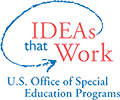Lesson Study Part 1:
Building Prerequisite Knowledge for Lesson Study
Author: Kristen Arnold
Definition of the PLO:
Lesson study (LS) is a collaborative practice-based approach to learning that can be used to improve teachers’ and teacher candidates’ thoughtful implementation of high leverage practices (HLPs). First developed in Japan, LS engages preservice teachers and/or practicing teachers in a “cyclical process of collaborative planning, enactment and observation of instruction, and reflection within small peer groups” (Roberts et al., 2017, p. 238). The LS process helps preservice teachers and practicing teachers engage in critical discourse about their instruction and its impact on student learning with the intention of improving it. Studies of the LS process in preparation and professional development (PD) have shown that it can be useful in improving teachers’ knowledge (Chassels & Melville, 2009; Juhler, 2016) and instructional practice (Chizhik et al., 2017) and can impact student achievement (Gersten et al., 2010; Gersten et al., 2014). Additionally, strategic use of planning and lesson reflection tools seem to enhance the quality of the LS process by supporting the quality of teachers’ discourse about teaching and student learning (Kostas, Galini, & Maria, 2014).
Description of the PLO:
Dr. Kristen Arnold at Whitworth University uses LS to support her candidates’ ability to implement five HLPs in an elementary and secondary practicum experience. These HLPs include (a) Use student assessment data, analyze instructional practices, and make necessary adjustments that improve student outcomes (HLP#6); (b) Collaborate with professionals to increase student success (HLP#1); (c) Systematically design instruction toward a specific learning goal (HLP#12); (d) Adapt curriculum tasks and materials for specific learning goals (HLP#13); and (e) Use explicit instruction (EI; HLP#16). She provides candidates with instruction in these HLPs prior to implementing the LS cycle. To participate in HLP LS (Part 2), candidates first need to learn about the HLPs they will be implementing. Part 1 of this PLO is designed to build prerequisite knowledge of HLPs in controlled settings before candidates engage in deliberate practice with K-12 students in authentic settings. Part 1 occurs over seven weeks. In a modular format, candidates participate in interactive lectures, read research syntheses in support of each HLP, view HLPs being modeled, and engage in discussions with their peers. Candidates also complete assessments that serve as scaffolds for LS, completing objectives that closely align content with K-12 practicum classrooms. The lecture and activities are designed to develop candidates’ prerequisite knowledge for implementing LS.
Context for the PLO:
LS is taught in an accelerated master’s in teaching program for preservice general educators. As described in the video presentation, LS is embedded in a course on differentiated instruction (DI) for both elementary and secondary candidates. The course on DI follows a foundational course focused on exceptional learners taught the previous semester. In the summer, candidates learn about special education services, 13 federally recognized disability categories, the Individualized Education Program (IEP) process, and the inclusive teacher’s role in providing access to the general education curriculum for students with disabilities. In the fall, candidates spend two full days per week in K-12 practicum settings under the supervision of a general education mentor. To fulfill requirements for the differentiation course, candidates are expected to meet synchronously once a week and complete assignments outside of class meeting times.
Stage 1: Modular Study of HLP1
What is this stage about?
In this stage, lasting approximately one week, candidates develop prerequisite knowledge of HLP#1: Collaborate with professionals to increase student success. Content is presented in a modular format within the university learning management system (LMS). Using blended, flipped learning methods, the instructor includes both synchronous and asynchronous learning experiences that enhance learner autonomy and engagement (Horn & Staker, 2015; Nardo, 2017). The instructor also provides individual feedback upon candidate submission for the assignments completed in each module. A sample course schedule that outlines how modular study precedes LS is provided in Resource A.
How does the instructor implement this stage?
Step 1: (Before class) Candidates complete the following assigned readings to develop background for enriched discussions during the interactive lecture. Prior to class, candidates read the following chapters and complete entries in their Reading Response Journal (Resource B).
- Read pp. 28-34, “Research Synthesis: Collaboration,” in High Leverage Practices in Special Education.
- Read Chapters 1 and 2 in HLPs for Inclusive Classrooms.
- Read Chapter 9, entitled “Supporting Paraprofessionals,” in The Educator’s Handbook for Inclusive School Practices.
Step 2: (During class) Instructor provides an interactive lecture during synchronous class time that describes the skills required for effective collaboration between general and special educators and co-teaching approaches and shows videos with K-12 teacher explanations, models, and examples (Resource C). Candidates also complete a graphic organizer in their Reading Response Journal, listing the skills needed for successful collaboration shown in each video and noting the benefits of effective collaboration for K-12 students, including those with disabilities (Resource B).
Step 3: (After class) Candidates attend an IEP meeting in their practicum setting and submit a written reflection of the collaboration strategies observed during the meeting (Resource D).
Materials, resources, and readings used to implement Stage 1
Materials, resources, and readings used to implement Stage 1
Resource A: EDM531B Sample Course Schedule
Resource B: Reading Response Journal
Resource C: Interactive Lecture — Collaborating with Professionals
Resource D: IEP Meeting Reflection Paper Assignment Description
Causton, J., & Tracy-Bronson, C. P. (2015). The educator’s handbook for inclusive school practices. Paul H. Brookes.
McLeskey, J., Barringer, M-D., Billingsley, B., Brownell, M., Jackson, D., Kennedy, M., Lewis, T., Maheady, L., Rodriguez, J., Scheeler, M. C., Winn, J., & Ziegler, D. (2017, January). High leverage practices in special education. Arlington, VA: Council for Exceptional Children & CEEDAR Center. https://highleveragepractices.org/about-hlps
McLeskey, J., Maheady, L., Billingsley, B., Brownell, M. T., & Lewis, T. J. (Ed). (2019). High leverage practices for inclusive classrooms. Routledge.
Questions faculty/PD providers might have when implementing Stage 1 (and Stages 2-5)
- How much time will candidates need to complete readings and assignments outside of class? To participate successfully in the interactive lectures, candidates need to spend about three hours outside of class engaging in the outside readings and completing assignments. Undergraduate candidates who have no teaching experience may need more time.
- How do you handle when candidates come to class unprepared to participate? This situation often requires additional time spent reviewing material in person. Additionally, it is import to develop strategies for peer accountability. One strategy, the author of this PLO used, was to have a peer remind his or her partner prior to class (via text) to review the outside readings and assignments. She also used strategies for building classroom community — spending the first five minutes of class engaging candidates in introductory activities designed to support team building and engagement. This strategy did improve individual participation.
Stage 2: Modular Study of HLP6
What is this stage about?
In this stage, lasting approximately one week, candidates develop prerequisite knowledge of HLP#6: Use assessment data, analyze instructional practices, and make necessary adjustments to improve student outcomes. Content is presented in a modular format within the university learning management system (LMS). Using blended, flipped learning methods, the instructor includes both synchronous and asynchronous learning experiences that enhance learner autonomy and engagement (Horn & Staker, 2015; Nardo, 2017). The instructor also provides candidates individual feedback on assignments completed in each module.
How does the instructor implement this stage?
Step 1: (Before class) Candidates complete the following assigned readings to develop background knowledge for discussions during the interactive lecture. As they read prior to class, they complete entries in their Reading Response Journal related to the content (Resource B).
- Read pp. 40-49, “Research Synthesis: Assessment,” in High Leverage Practices in Special Education.
- Read Chapter 4, “Using Multiple Sources of Information to Develop a Comprehensive Understanding of a Student’s Strengths and Needs,” in High Leverage Practices for Inclusive Classrooms.
- Candidates read the article “Grading Exceptional Learners” in Educational Leadership.
Step 2: (During class) Instructor provides an interactive lecture during synchronous class time that reviews definitions and examples of diagnostic, formative, and summative assessments (Resource E). The lecture includes an introduction to curriculum-based measures (CBM) and a brief look at data-based individualization (DBI), as well as an explanation of how data can be used as a basis for instructional decision making.
Step 3: (After class) Candidates complete the Student Needs Summary (Resource F) to gather and review student data. This assignment helps candidates learn how to screen K-12 students who might be struggling to learn in inclusive settings, including those who may need special education services. This step is a scaffold for using student data in Part 2, which requires candidates to make instructional decisions based on student needs.
Materials, readings, and resources used to implement Stage 2
Resource B: Reading Response Journal
Resource E: Interactive Lecture — Using Student Assessment Data
Resource F: Student Needs Summary
Jung, L. A., & Guskey, T. R. (2010). Grading exceptional learners. Educational Leadership, 67(5), 31-35. https://www.ascd.org/el/articles/grading-exceptional-learners
McLeskey, J., Barringer, M-D., Billingsley, B., Brownell, M., Jackson, D., Kennedy, M., Lewis, T., Maheady, L., Rodriguez, J., Scheeler, M. C., Winn, J., & Ziegler, D. (2017, January). High leverage practices in special education. Arlington, VA: Council for Exceptional Children & CEEDAR Center. https://highleveragepractices.org/about-hlps
McLeskey, J., Maheady, L., Billingsley, B., Brownell, M. T., & Lewis, T. J. (Ed). (2019). High leverage practices for inclusive classrooms. Routledge.
Stage 3: Modular Study of HLP12
What is this stage about?
In this stage, lasting approximately one week, candidates develop prerequisite knowledge of HLP#12: Systematically design instruction toward a specific learning goal. Content is presented in a modular format within the university LMS. Using blended, flipped learning methods, the instructor includes both synchronous and asynchronous learning experiences that enhance learner autonomy and engagement (Horn & Staker, 2015; Nardo, 2017). The instructor also provides individual feedback upon candidate submission for the assignments completed in each module.
How does the instructor implement this stage?
Step 1: (Before class) Candidates complete the following assigned reading and writing activities to develop background for enriched discussions during the interactive lecture. As they read prior to class, they complete entries in their Reading Response Journal related to the content (Resource B).
- Read pp. 69-73, “Research Synthesis: Instruction,” in High Leverage Practices in Special Education.
- Read Chapter 11, “Identify and Prioritize Learning Goals,” and 12, “Systematically Design Instruction Toward a Specific Learning Goal,” in High Leverage Practices for Inclusive Classrooms.
- Copy three learning goals used within their practicum classroom into their Reading Response Journal.
Step 2: (During class) Instructor shares an interactive lecture during synchronous class time that discusses elements of systematically designed instruction (Resource G). The lecture introduces a mnemonic (ACCOMPLISH) as guidance for Part 2 as candidates develop clear learning goals for their lessons. The lecture also provides candidates with the opportunity to analyze different examples and non-examples of learning goals and determine whether they are clear.
Step 3: (During class) Recall from Step 1 that candidates previously copied three learning goals used within their practicum classroom into their Reading Response Journal (Resource B). Ask them to have this resource available to share with peers prior to attending class. Candidates are grouped with two or three peers who are student teaching within the same content area or grade level. They are to analyze the learning targets together to determine characteristics that may be present, missing, or unclear.
Materials, readings, and resources used to implement Stage 3
Resource B: Reading Response Journal
Resource G: Interactive Lecture — Systematically Design Instruction
McLeskey, J., Barringer, M-D., Billingsley, B., Brownell, M., Jackson, D., Kennedy, M., Lewis, T., Maheady, L., Rodriguez, J., Scheeler, M. C., Winn, J., & Ziegler, D. (2017, January). High leverage practices in special education. Arlington, VA: Council for Exceptional Children & CEEDAR Center. https://highleveragepractices.org/about-hlps
McLeskey, J., Maheady, L., Billingsley, B., Brownell, M. T., & Lewis, T. J. (Ed). (2019). High leverage practices for inclusive classrooms. Routledge.
Stage 4: Modular Study of HLP13
What is this stage about?
In this stage, lasting approximately one week, candidates develop prerequisite knowledge of HLP#13: Adapt curriculum tasks and materials for specific learning goals. Content is presented in a modular format within the university LMS. Using blended, flipped learning methods, the instructor includes both synchronous and asynchronous learning experiences that enhance learner autonomy and engagement (Horn & Staker, 2015; Nardo, 2017). The instructor also provides individual feedback to candidate for assignments completed in each module.
How does the instructor implement this stage?
Step 1: (Before class) Candidates complete the following assigned reading and writing activities to develop background for enriched discussions during the interactive lecture. As they read prior to class, they complete entries in their Reading Response Journal related to the content (Resource B).
- Read Chapter 13, “Adapt Curriculum Tasks and Materials for Specific Learning Goals,” in High Leverage Practices for Inclusive Classrooms.
- Read Chapter 12, “Differentiating Content,” and Chapter 13, “Differentiating Process,” and Chapter 14, “Differentiating Products,” in How to Differentiate Instruction in Academically Diverse Classrooms.
Step 2: (During class) Instructor shares an interactive lecture during synchronous class time that describes different ways to adapt curriculum tasks and materials (Resource H). Candidates are also encouraged to reflect on the idea that providing curricular access is an equitable teaching practice. They are prompted to think about how their decisions about content can create barriers or open doors to learning. At the conclusion of the lecture, candidates watch the instructor model how to use the Equalizer tool (Resource I) by differentiating formative assessments used within local K-12 districts.
Step 3: (After class) Candidates complete the Formative Assessment Fixer-Upper assignment. The purpose of this assignment is to provide candidates with the opportunity to practice differentiating a formative assessment to meet the needs of a specific K-12 student (or students). They choose a commonly used formative assessment from their practicum classrooms and use their resources from the reading and interactive lecture to “Fix Up” the assessment, writing a rationale for their decision-making process (Resource J).
Materials, readings, and resources used to implement Stage 4
Resource B: Reading Response Journal
Resource H: Interactive Lecture — Adapt Curriculum Tasks and Materials
Resource I: The Equalizer
Resource J: Formative Assessment Fixer-Upper
McLeskey, J., Barringer, M-D., Billingsley, B., Brownell, M., Jackson, D., Kennedy, M., Lewis, T., Maheady, L., Rodriguez, J., Scheeler, M. C., Winn, J., & Ziegler, D. (2017, January). High leverage practices in special education. Arlington, VA: Council for Exceptional Children & CEEDAR Center. https://highleveragepractices.org/about-hlps
McLeskey, J., Maheady, L., Billingsley, B., Brownell, M. T., & Lewis, T. J. (Ed). (2019). High leverage practices for inclusive classrooms. Routledge.
Tomlinson, C. A. (2017). How to differentiate instruction in academically diverse classrooms (3rd ed.). ASCD: Alexandria, VA.
Stage 5: Modular Study of HLP16
What is this stage about?
In this stage, lasting approximately one week, candidates develop prerequisite knowledge of HLP#16: Use explicit instruction. Content is presented in a modular format within the university LMS. Using blended, flipped learning methods, the instructor includes both synchronous and asynchronous learning experiences that enhance learner autonomy and engagement (Horn & Staker, 2015; Nardo, 2017). The instructor also provides individual feedback to candidates on assignments completed in each module.
How does the instructor implement this stage?
Step 1: (Before class) Candidates complete the following assigned reading and writing activities to develop background for enriched discussions during the interactive lecture. As they read prior to class, they complete entries in their Reading Response Journal related to the content (Resource B).
- Read Chapter 16, “Use Explicit Instruction, in High Leverage Practices for Inclusive Classrooms.
Step 2: (During class) Instructor shares an interactive lecture during synchronous class time that defines, describes, and models EI (Resource K). Candidates are introduced to the elements of EI and how they are organized into four categories (I.e., content, design, delivery, and practice). They review a sample lesson plan template and have the choice of viewing several different model lessons.
Step 3: (After class) Candidates are to complete the Key Elements of Explicit Instruction Lesson Observation Tool and select one unedited video clip to observe and analyze (Resource L).
Materials and resources used to implement Stage 5
Resource B: Reading Response Journal
Resource K: Interactive Lecture — Use Explicit Instruction
Resource L: Key Elements of Explicit Instruction Lesson Observation
McLeskey, J., Barringer, M-D., Billingsley, B., Brownell, M., Jackson, D., Kennedy, M., Lewis, T., Maheady, L., Rodriguez, J., Scheeler, M. C., Winn, J., & Ziegler, D. (2017, January). High leverage practices in special education. Arlington, VA: Council for Exceptional Children & CEEDAR Center. https://highleveragepractices.org/about-hlps






